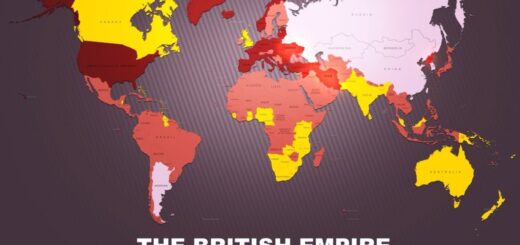EIR Daily Alert Service, FRIDAY, MAY 3, 2019
FRIDAY, MAY 3, 2019
Volume 6, Number 87
EIR Daily Alert Service
P.O. Box 17390, Washington, DC 20041-0390
- Infrastructure Agenda Points U.S. Towards the Belt & Road
- Indonesia’s High-Speed Railway Satellite Towns Would Create New Wealth
- Sri Lanka Port City Project Moves Ahead With China Development Bank Loan
- China’s Belt & Road Will Lead to Asia’s Infrastructure Growth, Admits Moody’s
- The Euro Victimizes Member States With Punitive Devaluation
- Zimbabwe’s Economic Crisis Is Becoming Acute
- CO2 Coalition Intervenes in Washington
- Japan’s Shinzo Abe Offers ‘Unconditional’ Meeting With Kim Jong Un
EDITORIAL
Infrastructure Agenda Points U.S. Towards the Belt and Road Initiative
May 2 (EIRNS)—The media mock it mercilessly, as they mock everything that is potentially good, but Tuesday’s White House infrastructure meeting between President Donald Trump and a dozen Congressional Democrats strikes close to the root of the question of why Donald Trump is in the White House today, and also the question of the late Lyndon H. LaRouche’s legacy, and the use to be made of LaRouche’s ideas in the acute crisis of today.
The same group is to meet again in the White House in about three weeks, to hear President Trump’s proposal for how to fund a (very inadequate) ten-year, $2 trillion infrastructure package. President Trump said, “I’ll lead on this. I’d like to do something. It may not be typically Republican.” He dismissed the previous White House plan, based on public-private partnerships (PPPs), saying, “That bill was so stupid. It was a Gary (Cohn) bill,” referring to his previous top economic advisor, from Goldman Sachs. PPP means “you get sued,” said the President.
Lyndon LaRouche was an expert in solving precisely this problem of how to deploy the principle of credit to mobilize the infrastructure which must underpin technological progress. Consider how he presented the solution in his December 7, 2012 webcast, “No to the Green Policy: Revive Our Credit System.”
LaRouche insisted that Franklin Roosevelt’s Glass-Steagall banking act must be restored to protect the needed, honest part of the banking system. But while Glass-Steagall is indispensable, he warned, “it does not contain a cure. It contains a preventive of gambling, and it is necessary.
“But here’s where the problem comes in: We’re going to be operating, not on the basis of the present system. That is, if the United States is going to survive: if the U.S. economy is not going to disintegrate entirely, what’s going to have to happen … is the installation of a credit system as the basis of actually creating the growth of the U.S. economy. That is, an inflation-free form of growth, or hyperinflation-free form of growth, as the matter is now.”
But “credit does not lie in letting money sit in a bank; it must dosomething,” LaRouche specified. “It must change its character; it must be more efficient; or it must be more enriching. It means technological progress; it means higher rates of energy-flux density, which is an essential part of this. People are more skilled; they do a job which is a more skilled job; they produce more value with the same amount of nominal labor. That’s the system. We must generate growth. We must increase the productive power of labor. We must advance technology—absolutely. We must increase the energy-flux density flowing through the entire system.
“So all the myths which Republicans and Democrats alike believe in, with a kind of religious fervor, or, shall we say, Satanic passion, arewrong. The generation of credit, as real credit, occurs only by the increase of the productive powers of labor, as measured in physicalterms. This means physical terms in the sense that people doing the same thing do it more efficiently, or do it at a higher technology.”
This is the principle of Federal credit, and that principle precedes and absolutely governs the forms of the institutions through which that Federal credit is issued, which are accurately summarized, for U.S. history, in LaRouchePAC’s January 2019 statement “The Way Forward,” which said, “Hamilton did it through the National Bank. Abraham Lincoln did it with his Greenback policy. Franklin Roosevelt did it through the Reconstruction Finance Corporation. So why not return to the best practice of both parties in finding a principled way to fund desperately needed infrastructure?”
Upgrading U.S. infrastructure from the present American Society of Civil Engineers’ “D+” to their “A” level will indeed increase the productivity of all labor—but sustaining the increase in productivity requires the qualitative revolutions which LaRouche indicates above. One great leap will involve bringing the huge Chinese high-speed rail industry to invest in the United States to begin to revolutionize its ground transport. That will have to be followed up with magnetic-levitation rail, also now being pioneered by China.
LaRouche later rejected the term “infrastructure” entirely, in favor of the much more general concept of “economic platforms” forming the basis of an entire stage of human economic-scientific-cultural development. Think, for example, of the leap in progress accomplished with the emergence of the prehistoric maritime culture which based itself on knowledge of the relationship between the long-cycle solar calendar and the entire celestial sphere.
In the case of the immediate crisis facing the United States, that concept necessitates unifying the short cycle of disaster relief from the Midwest flooding, with the intermediate cycle of disaster prevention, and the longer cycle of bringing the Belt and Road and its Eurasian Land-Bridge, throughout the Western Hemisphere from Alaska south to Tierra del Fuego, and equally East to West across the hemisphere.
At the same time, that concept introduces an even grander consideration: that of Solar System exploration and colonization. Now man can no longer be seen as strictly an Earth-bound species. We are in transition from a terrestrial “platform” to a Solar System platform. The race to land man on the Moon within five years, and then to colonize the Moon and begin to explore Mars, has already forever changed our perspective even on Earth. And our apparently Earthly “infrastructure” plans undertaken today, will be penetrated and conditioned by the space Odyssey. All labor, of whatever form, will become more productive because of across-the-board scientific and technological breakthroughs spinning off from the space effort. This was the Kennedy economic miracle: His de Gaulle-style indicative planning or industrial policy, and his infrastructure initiatives were all revolutionized by the Apollo lunar program, as the infrastructure initiative in the U.S. today will be revolutionized by the space program and the cooperative international crash space program of the immediate future.
THE NEW GLOBAL ECONOMIC ORDER
Indonesia’s High-Speed Railway Satellite Towns Would Create New Wealth
May 2 (EIRNS)—Reporting on Indonesia’s high-speed railroad now under construction on April 30, Reuters said the Indonesian-Chinese consortium building a high-speed rail link between the capital Jakarta and the textiles hub of Bandung expects to earn $18 billion by developing satellite towns and industrial centers along the line, according to a consortium official. The project, part of the Belt and Road Initiative, will be “the first high-speed rail of Southeast Asia,” China’s Ambassador to Indonesia Xiao Qian stated.
Analysts say the plan in Indonesia to develop four new towns and industrial centers, the way the Chinese had done in developing its own high-speed railroad, has followed China’s urban development model. One of the sites chosen is an old tea plantation which is due to be transformed into a 5,000-hectare city with high-rise buildings and a new university. Indonesian and Chinese officials say the project’s success will be a gauge for future infrastructure cooperation.
Lyndon LaRouche identified this “development corridor” concept when he proposed the Eurasian Land-Bridge in the 1990s. As he summarized the principle nicely in a May 10, 1997 webcast:
“You have development corridors, where you develop on an area of 50 to 70 kilometers either side of your rail link, your pipeline, so forth. You develop this area with industry, with mining, with all these kinds of things, which is the way you pay for a transportation link. Because of all the rich economic activity: every few kilometers of distance along this link, there’s something going on, some economic activity. People working; people building things; people doing things.”
This is how, LaRouche went on, we will “transform this planet, in great projects of infrastructure-building, which will give you the great industries, the new industries, the new agriculture, and other things we desperately need. There is no need for anybody on this planet, who is able to work, to be out of work! It’s that simple.”
Sri Lanka Port City Project Moves Ahead with China Development Bank Loan
May 2 (EIRNS)—Amid last month’s terror crisis, the Sri Lankan government is moving ahead with its economic cooperation with China, and one of its mega-projects, the Port City Project which has China as one of its backers. Sri Lanka will obtain a $100 million interest-free loan facility from the China Development Bank (CDB) to expand the proposed Port Access Elevated Highway to Marine Drive through Colombo Port City.
The Cabinet of Ministers on April 30 approved a proposal presented by Megapolis and Western Development Minister Patali Champika Ranawaka to sign a tri-party loan agreement with CDB and the China Harbour Engineering Co.’s (CHEC) Port City Colombo (Pvt.) Ltd. The interest-free loan will be long term, and made out to CHEC Port City Colombo (Pvt.) Ltd and the government. Conditions of the loan are still to be worked out between the Treasury and CDB, reported Colombo’s Daily Mirror today.
The Cabinet also approved a proposal presented by Minister Ranawaka to form a joint property management company between the government and CHEC Port City, for the management and maintenance purposes of Colombo Port City.
When Colombo Port City is completed, it is projected to have 80,000 residents and 250,000 daily commuters, and is expected to attract $15 billion in investments over the course of the project. The project includes the reclamation of 269 hectares of land, which has been completed, the construction of a breakwater, which is nearing completion, along with the development of roads, utilities and other infrastructure.
China’s Belt and Road Will Lead to Asia’s Infrastructure Growth, Admits Moody’s
May 2 (EIRNS)—Even Moody’s Investors Service has admitted in a new report issued today, that China’s Belt and Road Initiative (BRI), by investing in large transportation and energy projects which connect critical infrastructure gaps, helps build productive capacity. BRI investments contribute to both near-term economic growth and long-run growth potential in recipient countries, the agency said in a statement today. Moody’s wrote that bilateral lending from China comprises much of the financing for BRI projects and the scale relative to the size of the host economy, the terms of lending, and the recipient, whether a government or private sector entity varies considerably among sovereigns.
William Foster, Moody’s Vice President and Senior Credit Officer, felt it necessary to make a note of caution, remarking in the company statement: “However, inefficient project implementation, and the absence of macroeconomic and structural reform requirements in many Chinese loans can lessen longer-term credit benefits for some sovereigns. Meanwhile, the scale and terms of BRI investment can amplify macro-stability risks for sovereigns with weaker economic fundamentals and limited policy effectiveness.” In short, objecting to the lack of IMF-style conditionalities that have so long strangled poorer nations.
COLLAPSING WESTERN SYSTEM
The Euro Victimizes Member States with Punitive Devaluation
May 2 (EIRNS)— The monetary expansionist policies of the European Central Bank aimed at keeping alive the bankrupt financial system, are provoking imbalances globally and inside the EU by depreciating the euro. A look in the books of the Bank of Italy shows that the devaluation of the euro vis-à-vis the yen and the dollar has resulted in a punitive devaluation regime for countries such as Italy. And this, while pursuing the public narrative that the euro has prevented “bad” national competitive devaluations.
Bank of Italy dollar and yen reserves have increased last year by 10% and 20% respectively, reflecting the depreciation of the euro against those currencies. This means that Italy pays 10% more for imports which are paid in dollars—such as hydrocarbons (its top import item), while at the same time, two-thirds of Italy’s exports are denominated in the devalued euros.
Had Italy had its own national currency, trade balances and productivity levels would set the value of the currency lower than the German currency and probably at the same level as the dollar. Under the Bretton Woods system, it was the case that parities were adjusted when necessary in order to prevent countries from going bankrupt through artificially high national currencies. This cannot happen inside the euro system and its 19 member states, which is working like a British-style gold standard, in which gold is replaced by the euro as a foreign currency which member countries must borrow from a monopolistic agency, the ECB.
So, while blaming “competitive devaluations” as the devil’s work, the euro pursues a “punitive devaluation” against some member countries.
Zimbabwe’s Economic Crisis Is Becoming Acute
May 2 (EIRNS)—In an e-mailed statement, Zimbabwe’s President Emmerson Mnangagwa has accused “unpatriotic” members of the business community of thwarting the government’s economic program, saying recent price increases are “unjustifiable,” The Zimbabwean reported. “My government will not stand by and leave workers and the generality of our people at the mercy of a small group with rent-seeking profiteering tendencies,” he stated.
What is evident is that the country is undergoing serious cash crunch. Having borrowed from the IMF, Zimbabwe has been forced into reforms based on austerity, which Finance Minister Mthuli Ncube admits “is turning out to be bitter for many Zimbabweans.” Typically, the IMF program requires austerity measures such as the removal of some subsidies.
Zimbabwe’s Treasury is trying to find other credit lines, through South Africa, China and Botswana, even the United Kingdom. Ncube said the country has “lost 80 credit lines because we have not cleared our arrears,” The Zimbabwean reported.
U.S. POLITICAL AND ECONOMIC
CO2 Coalition Intervenes in Washington
May 2 (EIRNS)—Princeton physicist Dr. William Happer, one of the founders of the CO2 Coalition of scientists, was reportedly scheduled to meet with President Donald Trump in the White House May 1, while the Coalition presented a forum in Washington—enlightening though sparsely attended—on the benefits of rising CO2 atmospheric levels for global food security. Dr. Happer, who did not speak at the forum, was to discuss Trump’s idea of a Presidential panel on climate science, according to a report in Daily Caller May 1 and another in Washington Examiner May 2. Dr. Happer is on the staff of the National Security Council.
No confirmation of the meeting came from either the White House or Dr. Happer, although the Examiner reported “Friends of Happer, and some advising the formation of the group, say they expect an announcement soon from the panel on its direction and structure.”
In the Visitors’ Center meeting rooms under the Capitol, Dr. Jacob Rossiter and Dr. Craig Idso of the Coalition presented exhaustive evidence that the small rise in CO2 atmospheric concentrations in the industrial age has provided extraordinary benefits for the biosphere—specifically, for the growth of plants of every kind from trees to cereals to legumes, etc.
Dr. Idso made the main presentation; Dr. Rossiter testified on the subject April 30 in the House Government Oversight Subcommittee on Science and Environment. Activists from the neo-medieval children’s crusade called the Sunrise Movement had been gathered to shout down Rossiter’s testimony, and he was able to give it only after Capitol Police cleared them from the room.
Most provocative were Idso’s charts and maps demonstrating that the 1982-2011 trend of increasing gross primary production (GPP) and water use efficiency (WUE) of biomass—including the contribution to these increases of a higher total leaf area index—were in fact global trends affecting even the great deserts. The largest percentage increases in GPP and WUE have actually taken place on the great African/Eurasian desert, the only exception being a northern section of the Gobi Desert where both have declined. Gross primary production of biomass has declined in the central Sahel despite slightly increased water use efficiency—this is the area to be transformed by the Transaqua Project.
Since the development and publication of these fundamental measures by Dr. Sylvan H. Wittner in 1982, some 10,000 experiments, in both indoor and outdoor environments, have been conducted to test the role of increasing CO2 concentration in this global trend—and it appeared Dr. Idso might have the data from all of them! They show that more CO—concentrations tested up to 650 ppm, compared to 400 ppm now—cause higher plant productivity, increased nutrient acquisition (including from fertilizers), and increased crop yields per unit of irrigation water applied. This has been shown for cereals, roots and tubers, legumes, leafy vegetables, beans, and fruit bushes, vines and trees. In addition, the rise already measured since the start of the industrial age, from approximately 330 ppm to 400 ppm, has seen increased tree size all over the world, in addition to the counter-desertification effects noted above.
When EIR raised the proposed Presidential climate science panel, the very understated Dr. Idso strongly and “absolutely” supported it. “That’s how science works,” he said. “Make hypotheses, test time. Find out whose are more correct.”
The pamphlet “What Rising CO2 Means for Global Food Security” is available on the CO2 Coalition’s website.
STRATEGIC WAR DANGER
Japan’s Shinzo Abe Offers ‘Unconditional’ Meeting with Kim Jong Un
May 2 (EIRNS)—Japanese Prime Minister Shinzo Abe has made an important overture to North Korea, telling Japanese daily Sankei Shimbun yesterday that he is willing to meet Kim Jong Un without the preconditions he has previously set for any such meeting, reported AFP and Kyodo.
“I want to meet Chairman Kim Jong Un unconditionally and talk with him frankly with an open mind. It is more than important for our country to be proactive in tackling the issue. We can’t break the shell of mutual distrust between Japan and North Korea unless I directly face Mr. Kim. I hope that he is a leader who can make a decision strategically and flexibly on what is best for his nation,” Abe told the paper.
Such face-to-face talks between serious national leaders has proven critical in the recent period to breaking through historic hostilities, as demonstrated in President Donald Trump’s meetings with Chairman Kim Jong Un, and China’s President Xi Jinping, and Xi’s meetings with India’s Prime Minister Narendra Modi.
British Links to Sri Lanka Bomber Being Probed
May 2 (EIRNS)—The Sri Lanka Daily Mirror reports that British security services are investigating possible links between a Sri Lanka suicide bomber Jameel Lathief and Hizb ut Tahrir (HuT) when he was living in London and studying at Kingston University in 2006-2007. The extremist Islamist group HuT, founded by Omar Bakri Mohammed, had a strong presence at the Kingston University at the time Lathief (aka Abdul Lathief Jameel Mohamed) was at the school to study aeronautical engineering, according to reports last month in Britain’s Daily Telegraph.
On the nine suicide bombers named by Sri Lankan police as involved in the Easter Sunday April 21 suicide bombings that killed 257 people, Abdul Lathief, has also been identified as having studied both in Britain and in Australia (2009-2013).
A useful reference point for Sri Lanka’s investigators is EIR’s Jan. 11, 2000 Memorandum to then Secretary of State Madeleine Albright, entitled “Put Britain on the List of States Sponsoring Terrorism,” which documents how the British Empire uses terrorism as surrogate warfare in its imperial designs, including giving safe haven in the U.K. and other support to terrorists, as long as their terror activities are aimed at countries other than Great Britain. (The Memorandum is available in EIR, Vol. 27. No. 3, Jan. 21, 2000.)
Trump Considering Putting Muslim Brotherhood on Terror List
May 2 (EIRNS)—The Trump Administration is considering adding the Muslim Brotherhood to the list of foreign terrorist organizations, reported the New York Times on April 30, in the wake of an April 9 White House visit by Egyptian President Abdel Fattah el-Sisi, who urged President Donald Trump to take that step and join Egypt in branding the movement a terrorist organization. The President reportedly responded positively to the proposal, saying it would make sense. Putting the Muslim Brotherhood on the terrorist list leaves companies and individuals that interact with it open to economic and travel sanctions.
White House Press Secretary Sarah Huckabee Sanders confirmed in a statement that the administration was working on designating the Muslim Brotherhood as terrorists. “The President has consulted with his national security team and leaders in the region who share his concern, and this designation is working its way through the internal process,” the Times quoted Sanders as saying.
EIR has extensive files going back decades available on its website exposing the Muslim Brotherhood’s role as a major terrorist apparatus for British Empire irregular warfare.
SCIENCE AND INFRASTRUCTURE
South Korea’s Doosan Heavy Industries To Invest in NuScale’s Small Modular Reactors
May 2 (EIRNS)—What could be a significant boost for a rapid development of small modular reactors (SMRs), South Korean infrastructure company Doosan Heavy Industries & Construction Co. Ltd. signed a memorandum of understanding on April 29 with the leading U.S. developer of small nuclear reactors, NuScale Power, to cooperate on manufacturing parts of NuScale’s SMR concept, with the possibility of a cash equity investment by Korean investors in the project, though specific terms remain to be determined, World Nuclear News reported. Doosan is a manufacturer of nuclear pressure vessels.
The announcement comes before NuScale’s reactor design has received a license from the National Regulatory Commission. NuScale is working through the design certification process at the NRC, which aims to complete its review of the reactor in September 2020. The target completion date for NuScale’s first plant is 2026, Morning Consult website reported April 29.
Through the MOU, whose details are not made public, Doosan may construct part of the NuScale reactor in the works for Utah Associated Municipal Power Systems at the Idaho National Laboratory. “Doosan Heavy can perform forgings that cannot be done in this country for the reactor’s module,” NuScale Chief Executive John Hopkins said, reported Morning Consult.
Reach us at eirdailyalert@larouchepub.com or call 1-571-293-0935

















